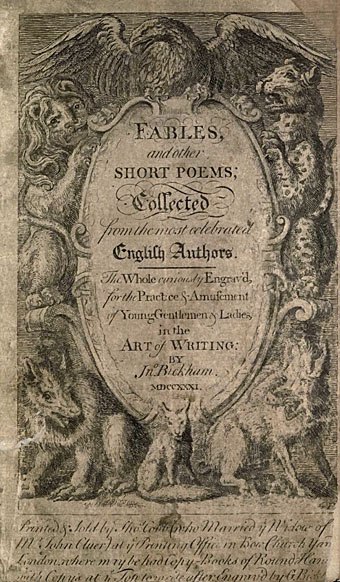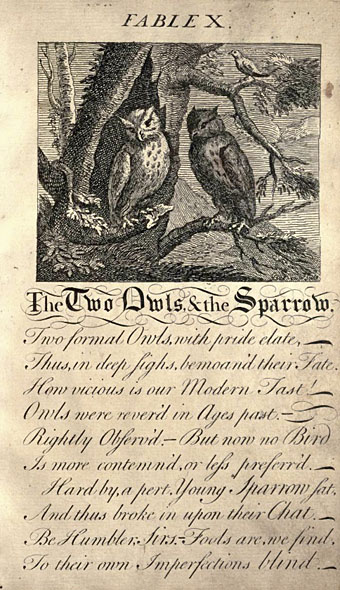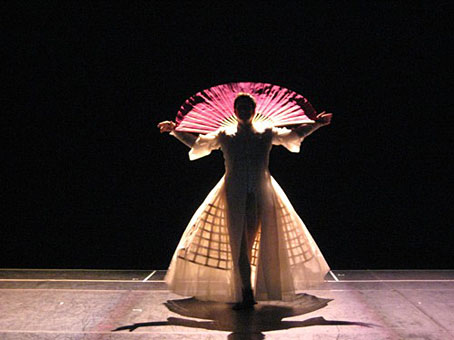Or Fables and other short poems : collected from the most celebrated English authors : the whole curiously engrav’d for the practice & amusement of young gentlemen & ladies in the art of writing to give its full title, a children’s primer from 1731 and another free title available at the Internet Archive. John Bickham was one of the famous family of engravers among whom George the Elder is particularly celebrated for his own stunning penmanship in The Universal Penman (1740), a book which is still in print. The moral fables here are mostly single-page verse pieces with titles such as The Lady and the Wasp or The Spaniel and the Camelion. One short piece, On Liberty, is especially pertinent following the weekend when the Convention on Modern Liberty declared its mission to resist the rise of the Total Surveillance State.
Oh Liberty! thou Goddess heav’nly bright,
Profuse of bliss, and pregnant with delight;
Eternal pleasures in thy presence reign,
And smiling Plenty leads thy wanton train.
Eas’d of her Load, Subjection grows more light,
And Poverty looks chearful in thy Sight.
Thou mak’st the gloomy face of Nature gay,
Giv’st Beauty to the Sun, and pleasure to the Day.
Elsewhere on { feuilleton }
• The illustrators archive
• The etching and engraving archive
Previously on { feuilleton }
• Letters and Lettering
• Studies in Pen Art
• Flourishes






